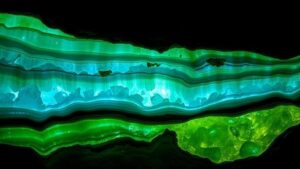Petrified Tundras: Hunting Fossilized Mammoth Bones and Ice Age Life
Petrified Tundras: Hunting Fossilized Mammoth Bones and Ice Age Life for Rockhounds and Mineral Collectors
The world of rockhounding and mineral collecting offers enthusiasts a unique window into Earth’s prehistoric past, especially when it comes to the exploration of petrified tundras. These frozen landscapes, once vibrant ecosystems inhabited by Ice Age megafauna, are now critical sites for uncovering fossilized remains, including the magnificent bones of mammoths. This article delves into the science, techniques, and thrill of hunting for fossilized treasures in these ancient terrains.
The Science Behind Petrified Tundras
Petrified tundras are the remnants of ancient ecosystems that existed during the Pleistocene Epoch, approximately 2.6 million to 11,700 years ago. During this time, large herbivores, such as mammoths, woolly rhinoceroses, and giant ground sloths roamed the Earth. Fossilization in tundra regions occurs under unique conditions where extreme cold preserves organic materials instead of allowing them to decay. This preservation process offers a window into past climates and environments.
Studies estimate that up to 80% of mammoth remains found in Siberia and Alaska are preserved in permafrost, which effectively freezes the biological matter. average size of a mammoth can reach up to 13 feet tall and weigh between 6 to 8 tons, presenting an intriguing challenge and opportunity for collectors.
The Appeal of Mammoth Bones
Mammoth bones are not just fascinating relics; they are highly sought-after by collectors due to their uniqueness and historical value. Some key features that make mammoth bones appealing include:
- Rarity: Uncovered bones are relatively rare, making them valuable to collectors.
- Scientific Importance: Fossils provide invaluable information about Ice Age ecosystems and climate change.
- Artistic Potential: Mammoth ivory, a byproduct of the bones, is used in various forms of art and jewelry.
Where to Hunt: Key Locations
Rockhounds and collectors should target specific geographical areas known for fossil finds. Notable regions include:
- Alaska: The Kenai Peninsula and the North Slope are prime regions for finding intact mammoth remains.
- Siberia: The permafrost of Yakutia is rich in well-preserved fossils, including complete carcasses.
- Canada: The Yukon Territory, home to various fossil sites and natural history museums.
Techniques for Successful Fossil Hunting
Collecting fossils in a petrified tundra environment requires a specific set of skills and knowledge. Here are some practical tips for aspiring fossil hunters:
Preparation and Tools
Before heading out, ensure you are equipped with the right tools and preparation:
- Fossil Hammer: Essential for extracting bones from ancient soils without damaging them.
- Picks and Trowels: Useful for detailed excavations and reaching hard-to-access spots.
- Sieving Tools: Helps in searching smaller debris for igneous rocks and microfossils.
Also, understanding local geology is vital. Knowledge about sediment layers can guide you to probable fossil locations, as certain strata contain higher concentrations of remains.
Legal Considerations and Respect for Nature
It is crucial to familiarize yourself with local laws regarding fossil collection. In some regions, such as national parks or protected lands, collecting fossils is prohibited. Always obtain necessary permits and ensure you follow ethical collecting practices that respect the environment. This includes:
- Reporting significant finds to local geological surveys.
- Not disturbing wildlife habitats.
- Remediating any disturbances made during the collecting process.
The Future of Fossil Hunting in Petrified Tundras
The ongoing effects of climate change are thawing permafrost regions, leading to the potential for increased fossil discoveries. Researchers have noted a significant rise in the number of mammoth finds in Siberia, attributed to melting ice. With advancements in paleontology and geoscience, fossilized tundras will continue to be valuable resources for understanding prehistoric life and climate.
As an enthusiast, taking part in fossil hunting not only contributes to personal collections but can also aid in scientific understanding, enhancing educational outreach about our planets history.
Actionable Takeaways
For aspiring collectors, consider the following steps:
- Join local rockhounding clubs to gain insights from experienced hunters.
- Participate in guided fossil tours to learn best practices and safety measures.
- Invest time in research about geology and paleontology to improve your hunting skills.
By embracing the thrill of the hunt and respecting the scientific significance of your finds, you can partake in the rich narrative of Ice Age life, contributing to both personal enjoyment and broader ecological understanding.



